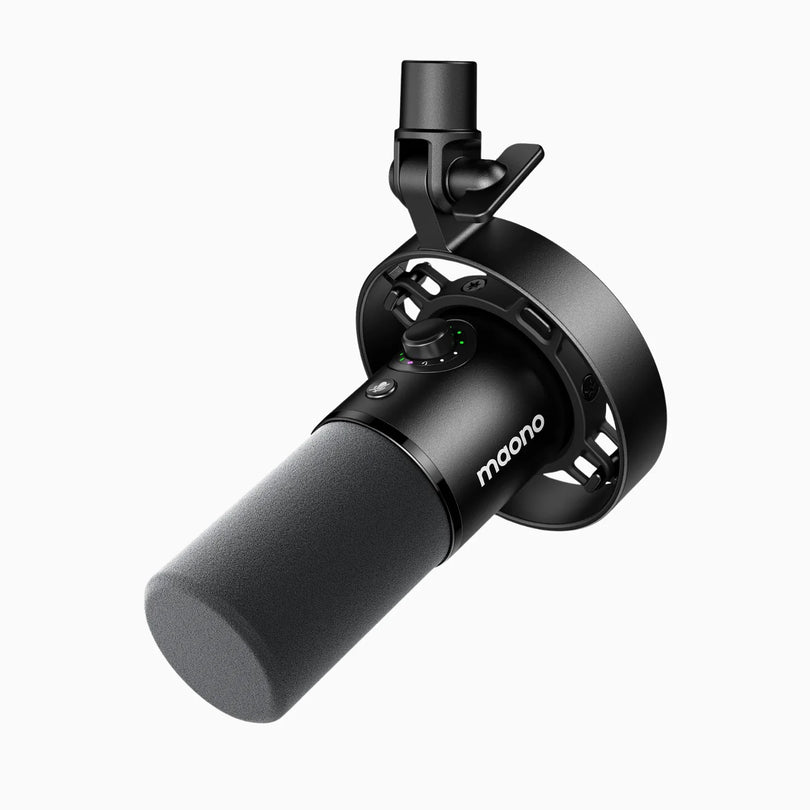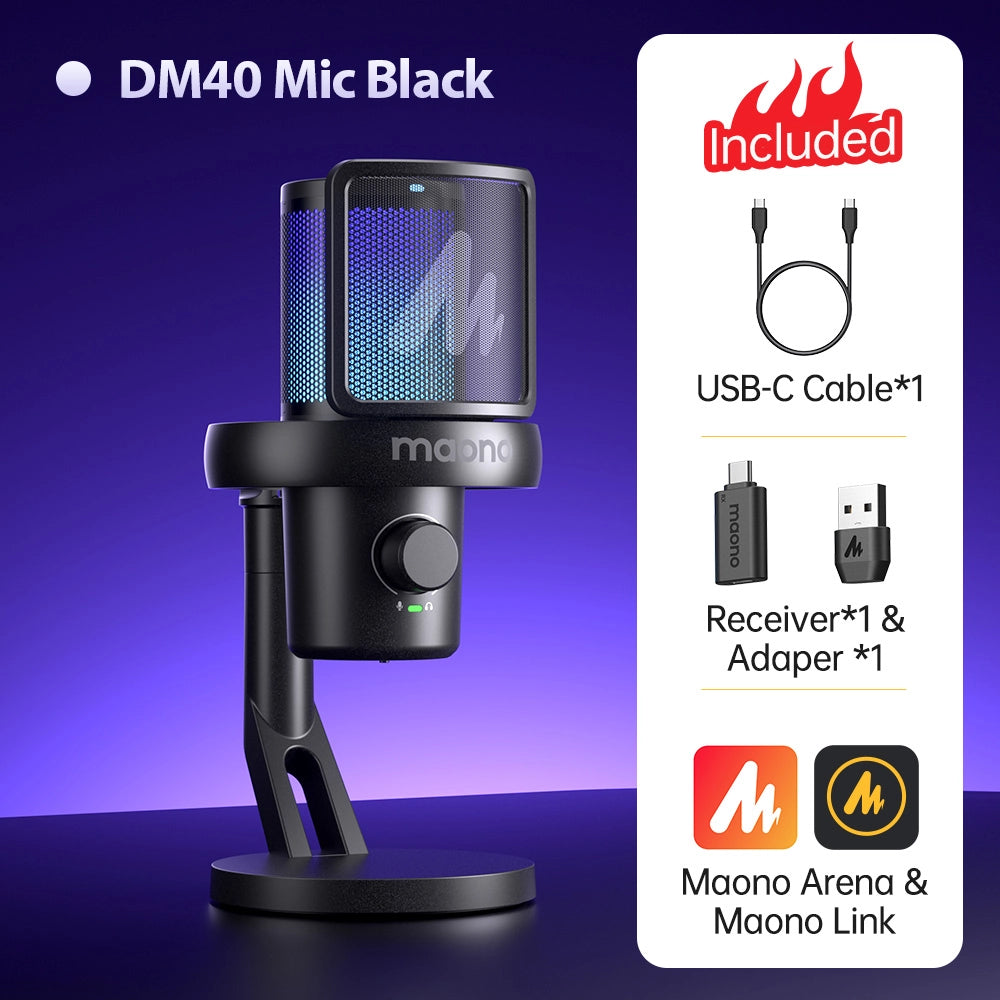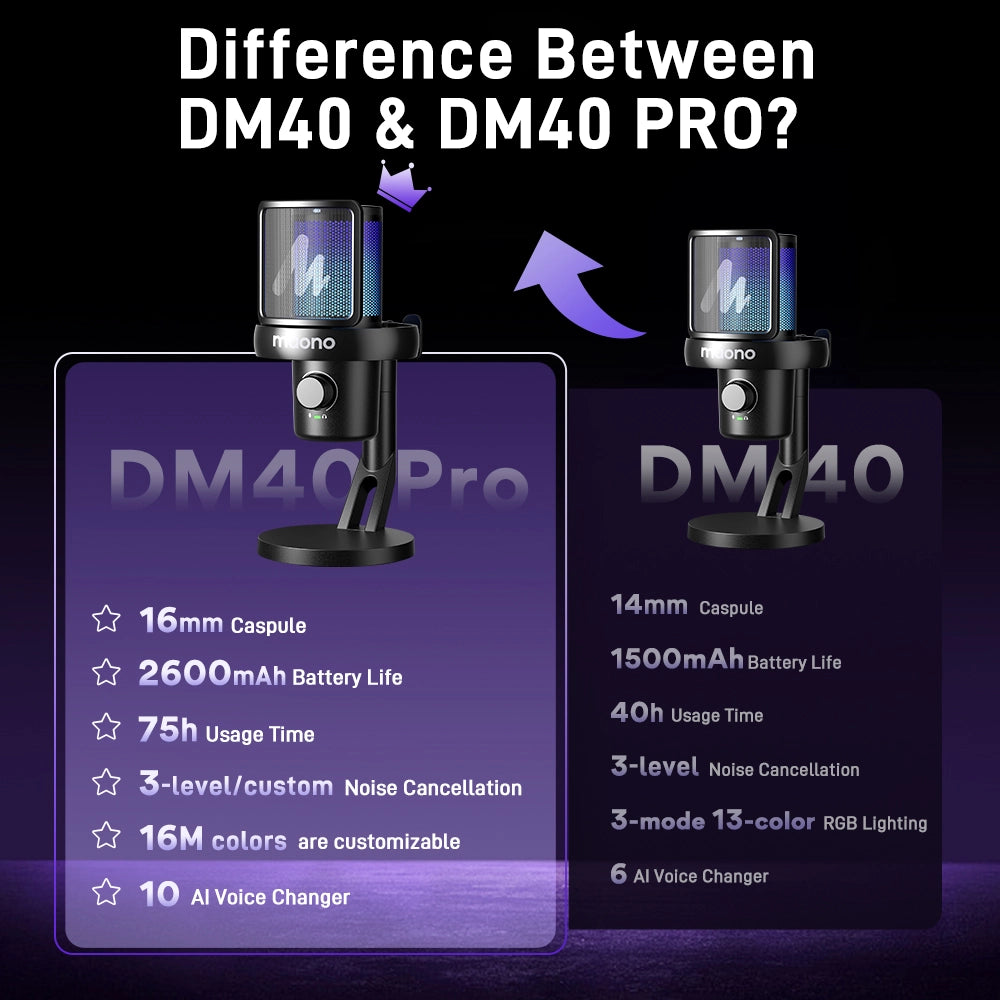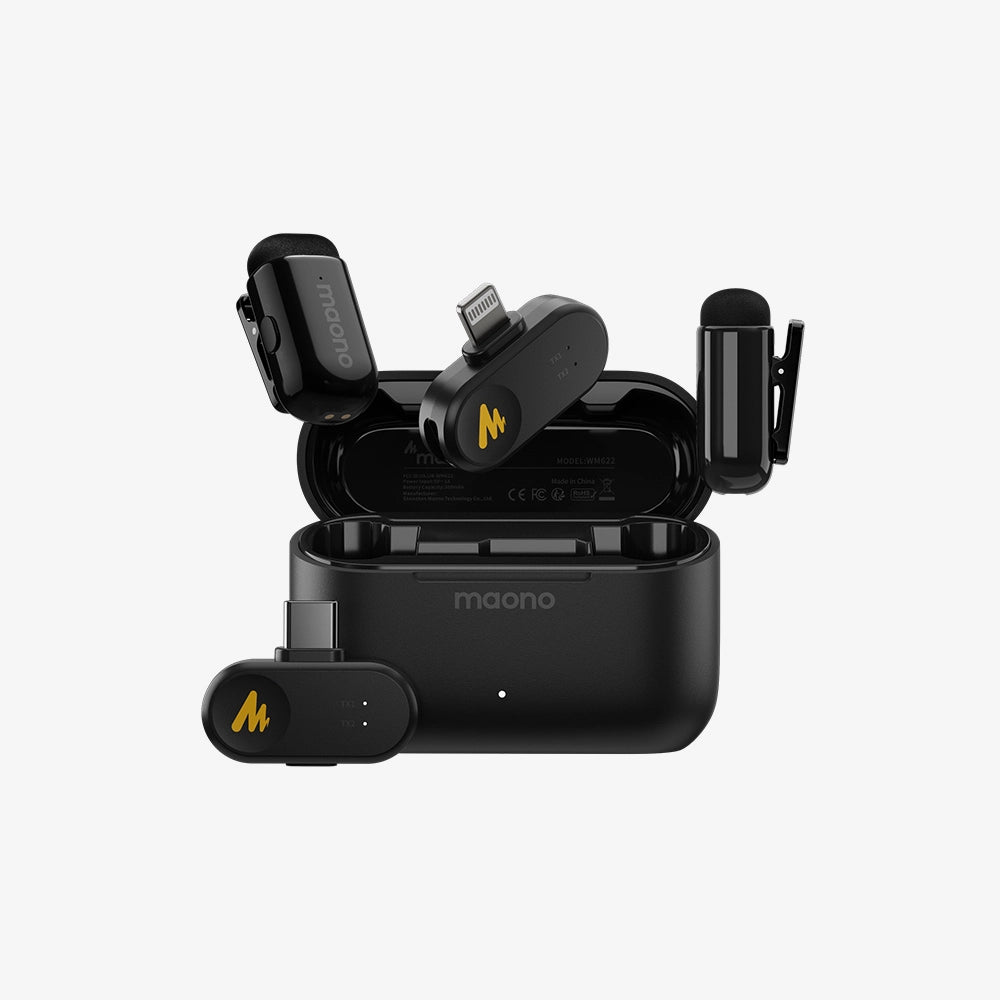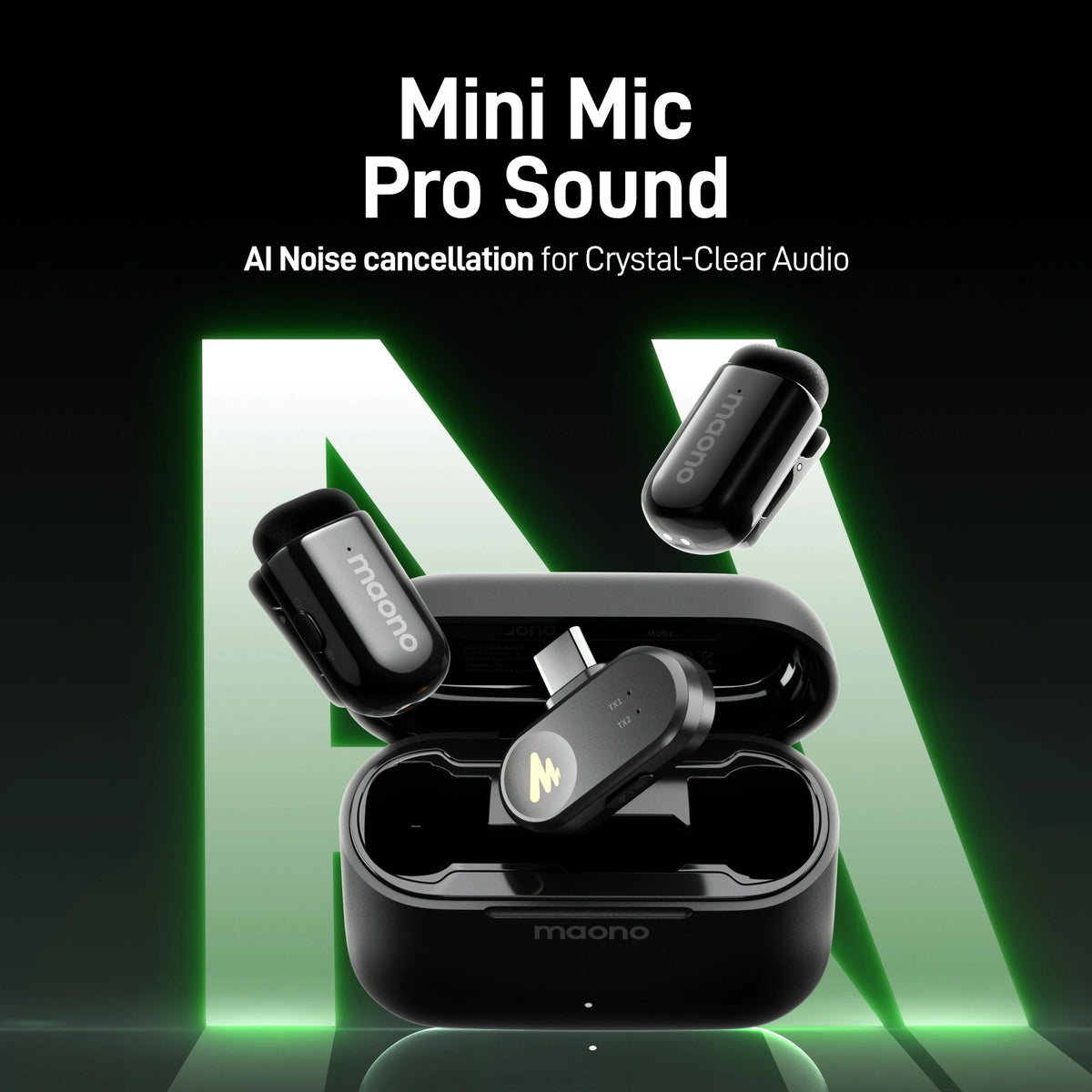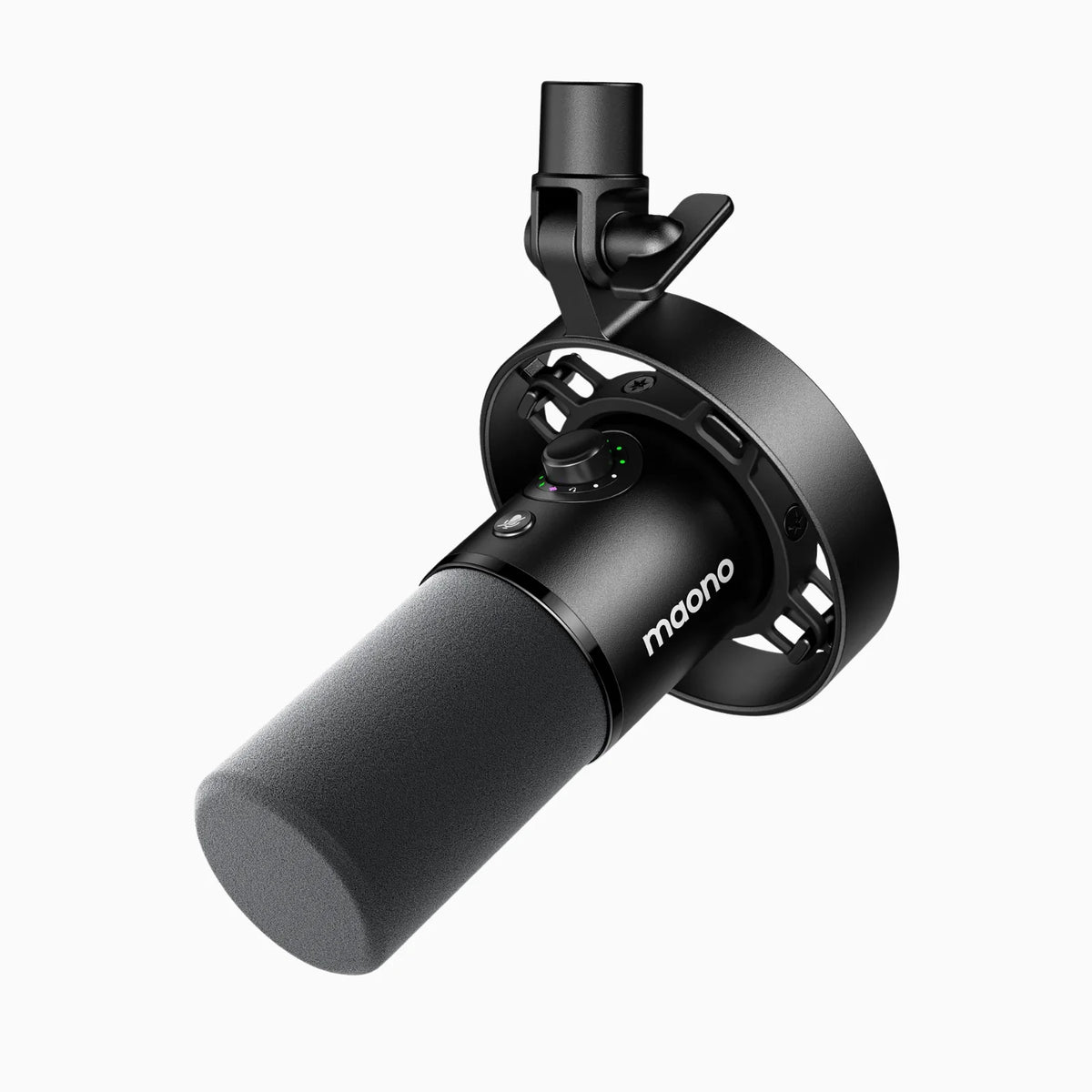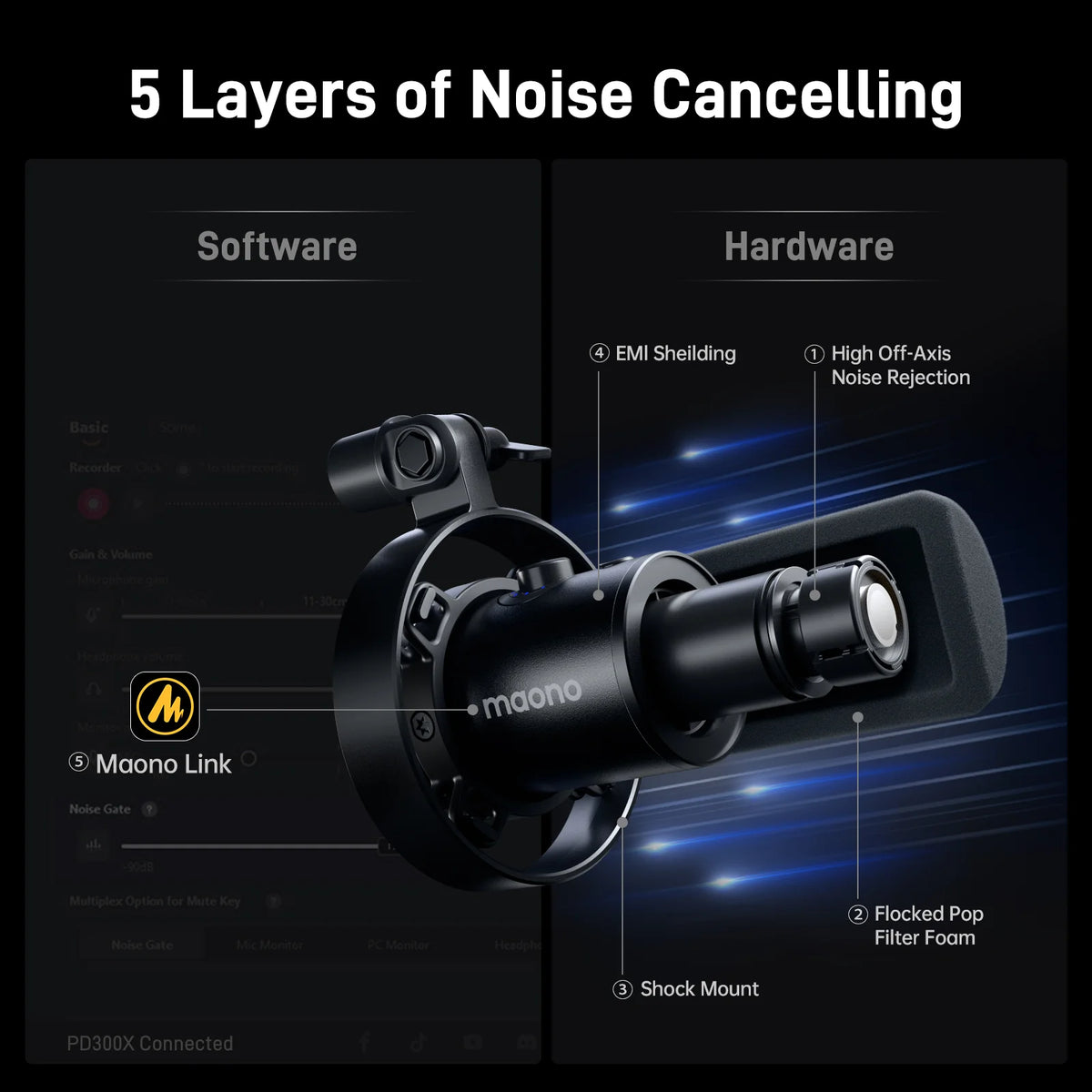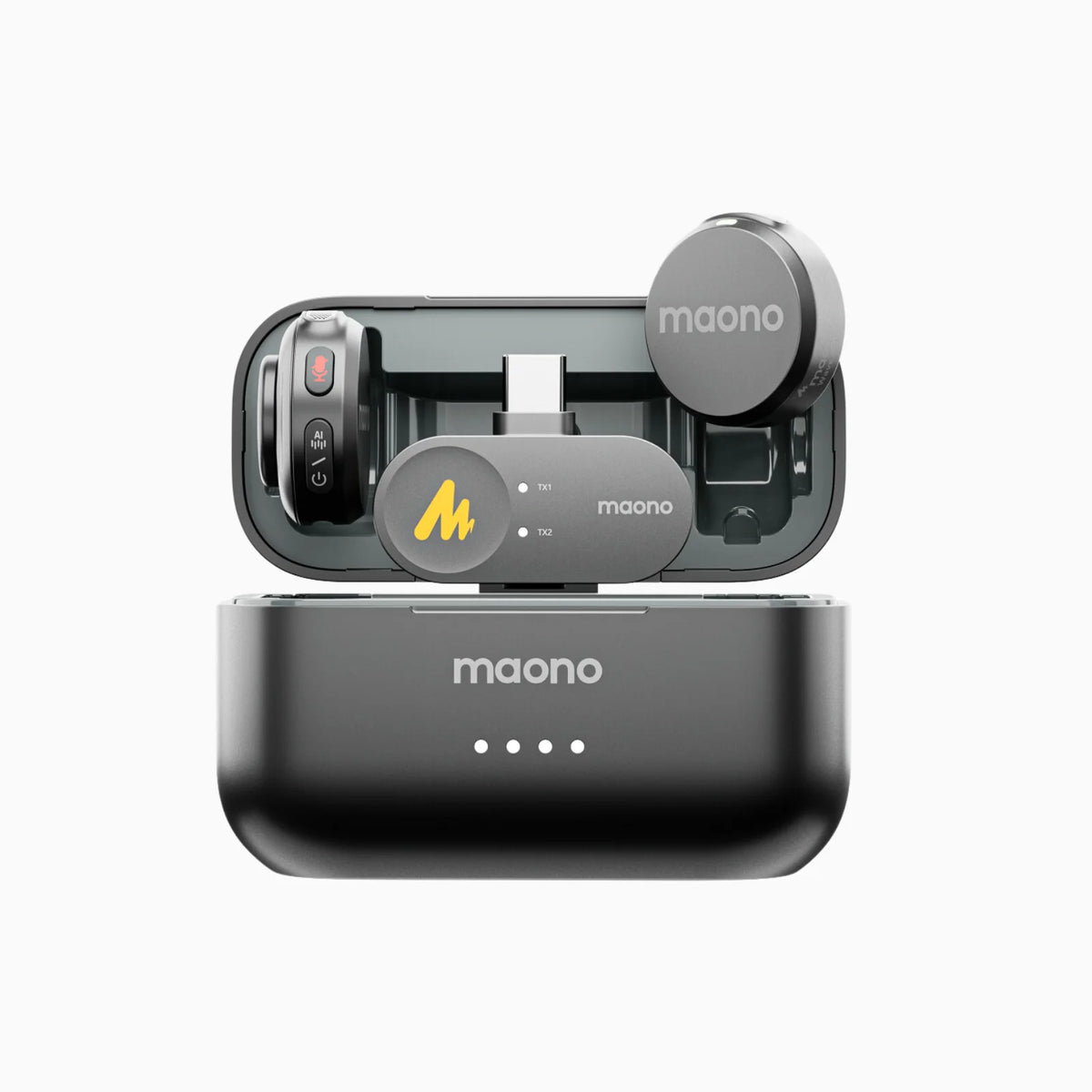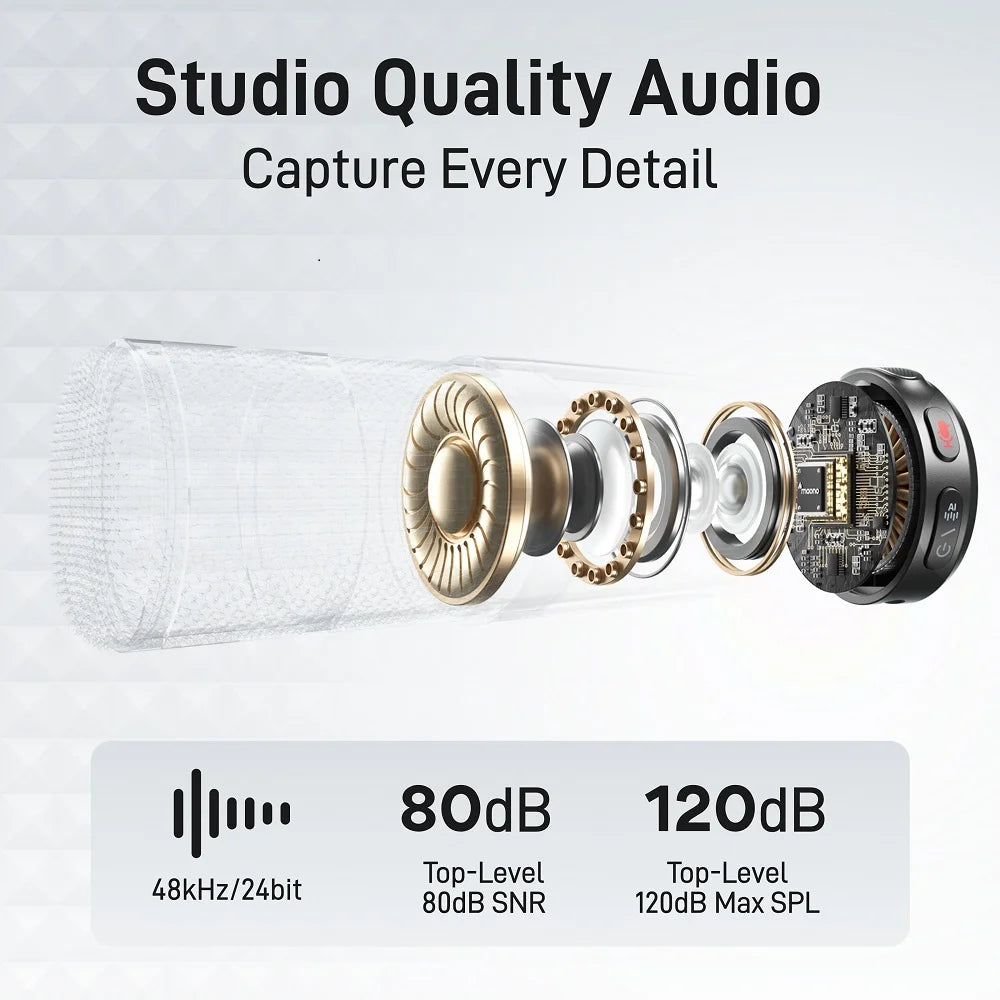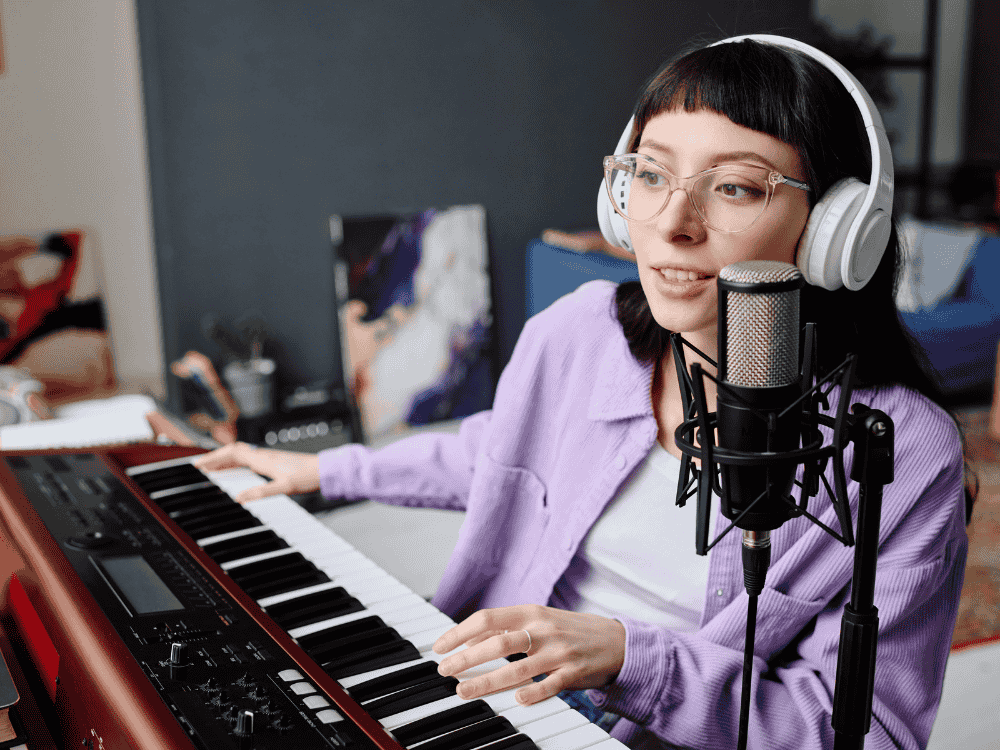Whose attention wouldn’t be caught by the sound of tapping finger nails on a box? Or by the squishy, rhythmic kneading of slime? That’s the power of a cardioid microphone delivering clear audio combined with colorful and catchy visuals. Did you notice the number of views on those ASMR recordings on YouTube? I know you have. Did you know that watching ASMR videos helps some people have better sleep and has been found helpful for those with insomnia?
What is ASMR and When Did It Become Popular?
Autonomous Sensory Meridian Response (ASMR) is a sensation characterized by a tingling feeling that typically begins on the scalp and moves down the neck and spine. It is often triggered by specific auditory and visual stimuli, including whispering, tapping, scratching, and other soft sounds. ASMR content has gained immense popularity on platforms like YouTube, where creators produce videos to help viewers relax, sleep, or de-stress.
ASMR started gaining traction around 2010, with the rise of dedicated ASMR channels and content creators. Today, it has become a global phenomenon, with millions of people consuming ASMR content daily for relaxation and mental well-being. Given the nature of ASMR, high-quality audio recording is essential to provide an immersive experience, making microphone selection a critical factor.
Why Cardioid Microphones Are Popular for ASMR
A cardioid condenser microphone is designed to capture sound primarily from the front while minimizing sound from the sides and rear. This directional pickup pattern makes it ideal for ASMR recordings, as it isolates the desired sound source while reducing ambient noise. ASMR artists favor cardioid microphones because they provide clear, detailed audio, making subtle sounds more pronounced and immersive for listeners.
What’s a Binaural Setup?
A binaural setup uses two microphones positioned to mimic human ears, creating a three-dimensional audio experience when played back through headphones. This technique enhances the immersive quality of ASMR recordings by making the sounds feel as though they are coming from different directions and distances. While cardioid microphones are often used for mono ASMR recordings, some artists incorporate two cardioid microphones in a binaural setup to achieve a realistic and immersive sound.
Other ASMR creators prefer binaural recording and many use a microphone with noise-cancellation for its ability to capture intimate sounds with precision and clarity.
What Are the Essential Features of a Good ASMR Microphone?
Choosing the right microphone for ASMR recording requires attention to several key features:
-
High Sensitivity
A good ASMR microphone should capture even the faintest sounds, ensuring that delicate triggers like soft whispers and tapping are picked up clearly.
-
Low Self-Noise
A microphone with minimal self-noise is essential for ASMR recordings to avoid unwanted hissing or buzzing sounds in the background.
-
Wide Frequency Response
A broad frequency range (typically 20 Hz – 20 kHz) ensures that all nuances of ASMR sounds are accurately captured.
-
Directional Pickup Pattern
Cardioid microphones excel at isolating sound from the front while rejecting background noise.
-
USB vs. XLR Connectivity
USB microphones are plug-and-play, making them more convenient for beginners, while XLR microphones offer superior sound quality and flexibility for professional setups.
-
Background noise cancellation microphone
Filters out ambient distractions for a cleaner ASMR recording.
Why Do ASMR Artists Prefer Cardioid Microphones?
A cardioid microphone pattern is ideal for ASMR because it:
-
Superior Noise Isolation
Cardioid microphones focus on capturing sounds from a single direction, minimizing background noise and enhancing the clarity of ASMR triggers.
-
Enhanced Detail and Clarity
These microphones provide a balanced frequency response, ensuring that subtle sounds are captured with high fidelity.
-
Affordability and Availability
Many high-quality cardioid microphones are available at various price points, making them accessible for both beginners and professionals.
-
Versatility
Cardioid microphones can be used for both mono and stereo ASMR recordings, offering flexibility in different recording setups.
How Close Should I Be to a Cardioid Microphone When Recording ASMR?
Proximity to the microphone significantly impacts the quality of ASMR recordings. The ideal distance depends on the type of ASMR sound being recorded:
Whispering and Soft Speech: 2-6 inches from the microphone ensures clear and intimate sound capture.
Tapping and Scratching: 4-8 inches works well for maintaining natural sound while preventing distortion.
Crinkling and Rustling Sounds: 6-12 inches allows for more spatial depth, preventing harsh transients.
Using a pop filter or foam windscreen can help reduce plosive sounds when recording close to the microphone.
How Can I Reduce Background Noise When Recording ASMR with a Cardioid Microphone?
Background noise can disrupt the immersive experience of ASMR recordings. Here are some ways to minimize unwanted sounds:
-
Choose a Quiet Environment
Record in a space with minimal ambient noise, such as a soundproof room or a closet lined with soft materials.
-
Use Soundproofing Materials
Acoustic foam panels, blankets, and rugs can help absorb unwanted noise.
-
Adjust Microphone Gain
Keeping the gain at an optimal level prevents capturing excessive background noise while maintaining sound clarity.
-
Enable High-Pass Filter
Many cardioid microphones feature a high-pass filter switch to eliminate low-frequency noise from air conditioning or traffic.
-
Use Noise Reduction Software
Post-processing tools like Audacity and Adobe Audition can help remove residual background noise.
What Is the Best Microphone Type for ASMR Recordings?
There are several types of microphones that can be used for ASMR, but cardioid condenser microphones are often the best choice.
The best microphones for ASMR recording are typically condenser microphones due to their high sensitivity and detailed sound capture. Among cardioid condenser mics, the Maono PM500 and Maono PM461 stand out as excellent choices.
Maono PM500: A Premium Choice for ASMR
Type: XLR Condenser Microphone
Polar Pattern: Cardioid
Frequency Response: 20Hz - 20kHz
-
Features:
-
Studio-grade audio quality with a warm, rich tone.
-
Ultra-low self-noise for clear ASMR triggers.
-
Durable metal construction for professional use.
-
Requires an audio interface or mixer, offering greater control over sound customization, or you can connect the XLR mic via Windows laptop, or a smartphone (iPhone) or iPad
-
Functions as a noise cancelling mic, ensuring crisp, immersive audio.
-
-
Why It’s Great for ASMR:
-
Captures delicate details with precision.
-
Excellent noise isolation, making it perfect for whispered ASMR.
-
Provides a professional-quality recording experience.
-
The Maono PM500 is an XLR condenser microphone that’s designed with an intelligent noise reduction capturing the clarity of sound with its cardioid pickup pattern and reducing unwanted background noise, making it perfect for ASMR recordings, voice over, and the like.
Maono PM461: A Budget-Friendly USB Alternative
-
Type: USB Condenser Microphone
-
Polar Pattern: Cardioid
-
Frequency Response: 20Hz - 20kHz
-
Features:
-
Plug-and-play convenience with USB connectivity.
-
Adjustable gain knob for easy volume control.
-
Shock mount and pop filter included for noise reduction.
-
Compact and lightweight design.
-
Built-in background noise cancellation microphone for better sound clarity.
-
Why It’s Great for ASMR:
-
Ideal for beginners who want a high-quality yet affordable microphone.
-
Reduces background noise while capturing intimate ASMR sounds.
-
No need for additional audio equipment, making it easy to set up and use.
The Maono PM461 is a USB condenser microphone that has a controllable gain which you can regulate (increase or decrease) the microphone sensitivity, making it perfect for YouTube streaming, ASMR, singing, gaming, chatting, etc.
Also, here’s a comparison of common microphone types:
-
Cardioid Condenser Microphones
Best for detailed, isolated sound capture. Examples include the Blue Yeti, Rode NT1, and Audio-Technica AT2020, or the Maono PM500 or Maono PM461.
-
Omnidirectional Microphones
Capture sound from all directions, making them suitable for certain ASMR triggers but less effective at noise isolation.
-
Binaural Microphones
Provide a 3D sound experience but require two separate microphone capsules.
-
Dynamic Microphones
Less sensitive than condensers, making them less suitable for soft ASMR sounds.
For most ASMR recordings, a cardioid condenser microphone is the ideal choice due to its sensitivity and noise-reduction capabilities.
Conclusion
Cardioid microphones are the preferred choice for ASMR recording due to their ability to capture clear, detailed sounds while minimizing background noise. A cardioid condenser microphone is a staple in the ASMR community, offering focused sound capture, excellent clarity, and minimal background interference.
Their cardioid microphone pattern ensures that even the most subtle triggers, such as whispers, tapping, and brushing sounds, are recorded with precision.
When selecting a cardioid microphone for ASMR, key factors such as sensitivity, self-noise level, and frequency response should be considered. Proper microphone placement, soundproofing, and noise reduction techniques can further enhance the recording quality, ensuring an immersive experience for listeners.
The Maono PM500 provides professional-grade audio for those seeking top-tier recordings, while the Maono PM461 offers an affordable and user-friendly option for beginners. By optimizing microphone placement and reducing background noise, you can create immersive ASMR content that truly resonates with your audience.
Whether you are a beginner looking for an affordable USB cardioid microphone or an experienced ASMR artist investing in a high-quality XLR model, understanding the features and best practices for using a cardioid microphone will help you produce professional-grade ASMR content that captivates and soothes your audience.




